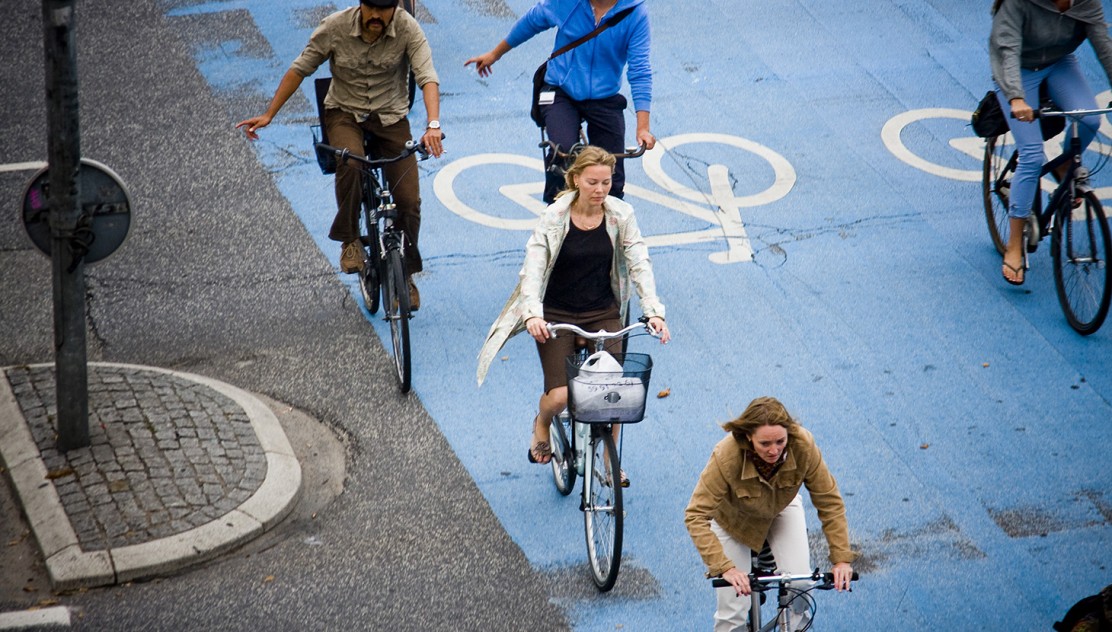„First we create the city – then the city shapes us.” Jan Gehl (architect)
The environment we live in has a huge effect on our behavior and our habits. But how a city can give the conditions for a healthy lifestyle?
Since living and working places got separated a lot of commuters travel each day between their office and their house or apartment. The preferred way of moving often is a car or a bus. Nowadays many jobs require a lot of time sitting in front of a computer. To go to the office by car or bus often leads to a lack of physical activity.
Not only our own health struggles because of commuting, the whole air pollution of a city rises. That’s why city developers started campaigns to change the behavior of their inhabitants and to make them go by bike.
An example of good practice is Copenhagen: The city reduces its amount of roads and parking lots to give bikers more safety. Instead they built a lot of biking lanes through the whole city center marked in blue color. Traffic lights always give priority to bikes instead of cars. This invitation to switch a car into a bike created a big culture of biking in Copenhagen. More than 50% of the cities inhabitants ride their bike every day. In 2008 37% went to work or to school by bike, only 31% took the car. But the city wants to continue its policy: they aim that 50% go by bike in future times.
But how is it possible to reduce the amount of roads for cars without causing huge traffic jams? In 1989 the Embarcadero Freeway which was one of the busiest roads of the city of San Francisco was closed because of an earthquake. Quite fast the commuters found alternative ways to go to the city center. Today there is no big road for cars any more, instead there is a green Boulevard with a Tramline and ways for bikers and pedestrians.
Nowadays after 100 years of car traffic it is accepted as a fact, that building new roads causes more traffic and traffic jams. On the other side cities like Portland, Milwaukee and Seoul showed that the reduction of big roads also reduced the amount of cars. The given infrastructure has a big influence on our way of living, it changes the way of thinking.
Another example is the city of London: In 2002 they created a tax for cars heading to the city center. In 2003 the amount of cars already reduced for 41%, instead the amount of bikes increased for 48%.
But not only mobility has an impact on a healthy lifestyle, a healthy city has to offer more than only bike lanes. Invitations for physical activity like parks, play courts, outdoor gyms, skate parks, ice skating, but also street festivals and parades are obligatory.
Words: Philipp
